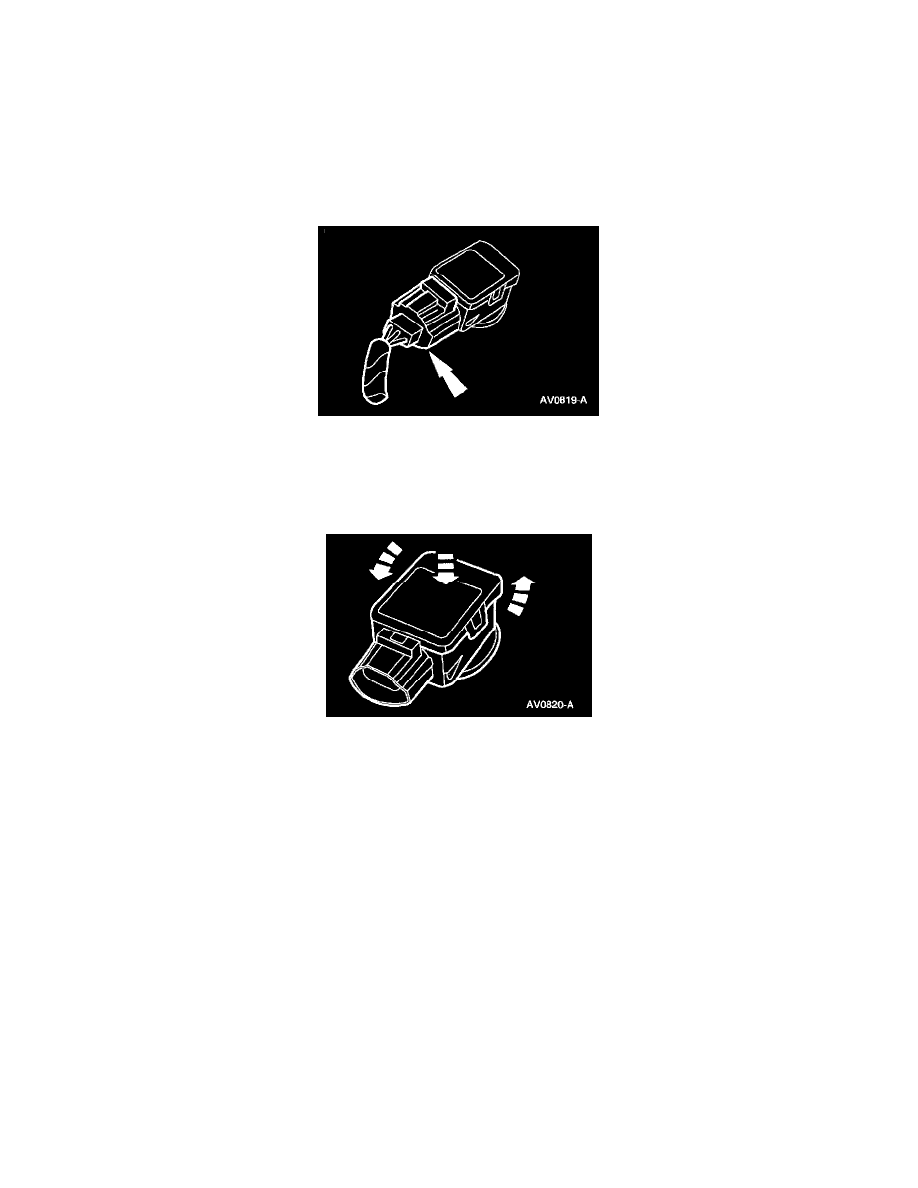Crown Victoria V8-4.6L VIN W (2000)

Fuel Tank Pressure Sensor: Service and Repair
REMOVAL
1. Disconnect the battery ground cable. For additional information, refer to Battery.
WARNING: THE EVAPORATIVE EMISSION SYSTEM CONTAINS FUEL VAPOR AND CONDENSED FUEL VAPOR.
ALTHOUGH NOT PRESENT IN LARGE QUANTITIES, IT STILL PRESENTS THE DANGER OF EXPLOSION OR FIRE.
DISCONNECT THE BATTERY GROUND CABLE FROM THE BATTERY TO MINIMIZE THE POSSIBILITY OF AN
ELECTRICAL SPARK OCCURRING, POSSIBLY CAUSING A FIRE OR EXPLOSION IF FUEL VAPOR OR FUEL LIQUID IS
PRESENT IN THE AREA.
2. Partially drain and lower the fuel tank. For additional information, refer to Fuel Tank/Service and Repair. See: Powertrain Management/Fuel
Delivery and Air Induction/Fuel Tank/Service and Repair
CAUTION: The fuel tank pressure sensor electrical connector must be disconnected before the fuel tank removal. Failure to do so can cause
damage to the fuel tank or fuel tank pressure sensor.
3. Push down and rotate the fuel tank pressure sensor counterclockwise to remove it from the fuel tank.
INSTALLATION
1. To install, reverse the removal procedure.
^
Leak test the system. For additional information, refer to Evaporative Emission System Leak Test. See: Powertrain Management/Emission
Control Systems/Evaporative Emissions System/Testing and Inspection/Component Tests and General Diagnostics/Component
Tests/Evaporative Emission System Leak Test
^
Carry out the evaporative emission repair verification drive cycle. See: Powertrain Management/Emission Control Systems/Evaporative
Emissions System/Testing and Inspection/Component Tests and General Diagnostics/Component Tests/Evaporative Emission Repair
Verification Drive Cycle
